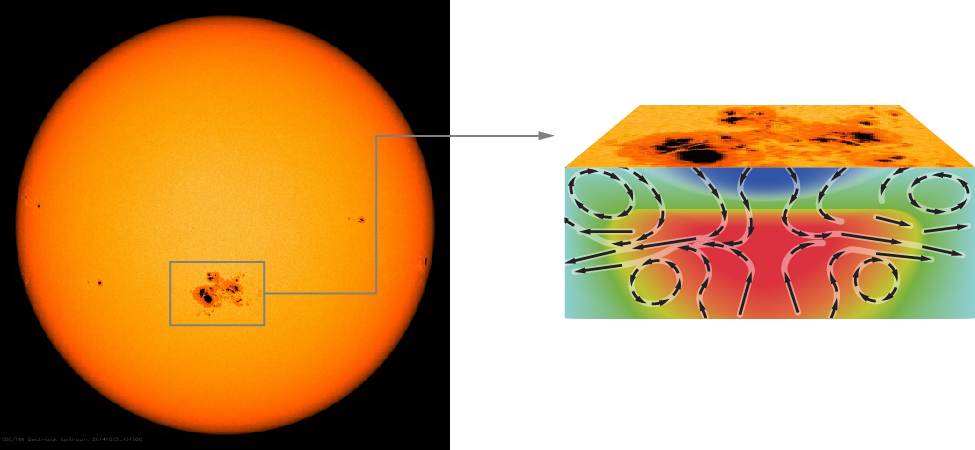| << Chapter < Page | Chapter >> Page > |
Helioseismology has shown that convection extends inward from the surface 30% of the way toward the center; we have used this information in drawing [link] . Pulsation measurements also show that the differential rotation that we see at the Sun’s surface, with the fastest rotation occurring at the equator, persists down through the convection zone. Below the convection zone, however, the Sun, even though it is gaseous throughout, rotates as if it were a solid body like a bowling ball. Another finding from helioseismology is that the abundance of helium inside the Sun, except in the center where nuclear reactions have converted hydrogen into helium, is about the same as at its surface. That result is important to astronomers because it means we are correct when we use the abundance of the elements measured in the solar atmosphere to construct models of the solar interior.
Helioseismology also allows scientists to look beneath a sunspot and see how it works. In The Sun: A Garden-Variety Star , we said that sunspots are cool because strong magnetic fields block the outward flow of energy. [link] shows how gas moves around underneath a sunspot. Cool material from the sunspot flows downward, and material surrounding the sunspot is pulled inward, carrying magnetic field with it and thus maintaining the strong field that is necessary to form a sunspot. As the new material enters the sunspot region, it too cools, becomes denser, and sinks, thus setting up a self-perpetuating cycle that can last for weeks.

The downward-flowing cool material acts as a kind of plug that block the upward flow of hot material, which is then diverted sideways and eventually reaches the solar surface in the region around the sunspot. This outward flow of hot material accounts for the paradox that we described in The Sun: A Garden-Variety Star —namely, that the Sun emits slightly more energy when more of its surface is covered by cool sunspots.
Helioseismology has become an important tool for predicting solar storms that might impact Earth. Active regions can appear and grow large in only a few days. The solar rotation period is about 28 days. Therefore, regions capable of producing solar flare s and coronal mass ejection s can develop on the far side of the Sun, where, for a long time, we couldn’t see them directly.

Notification Switch
Would you like to follow the 'Astronomy' conversation and receive update notifications?